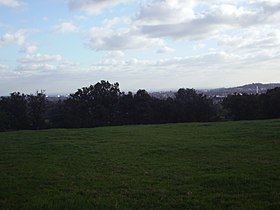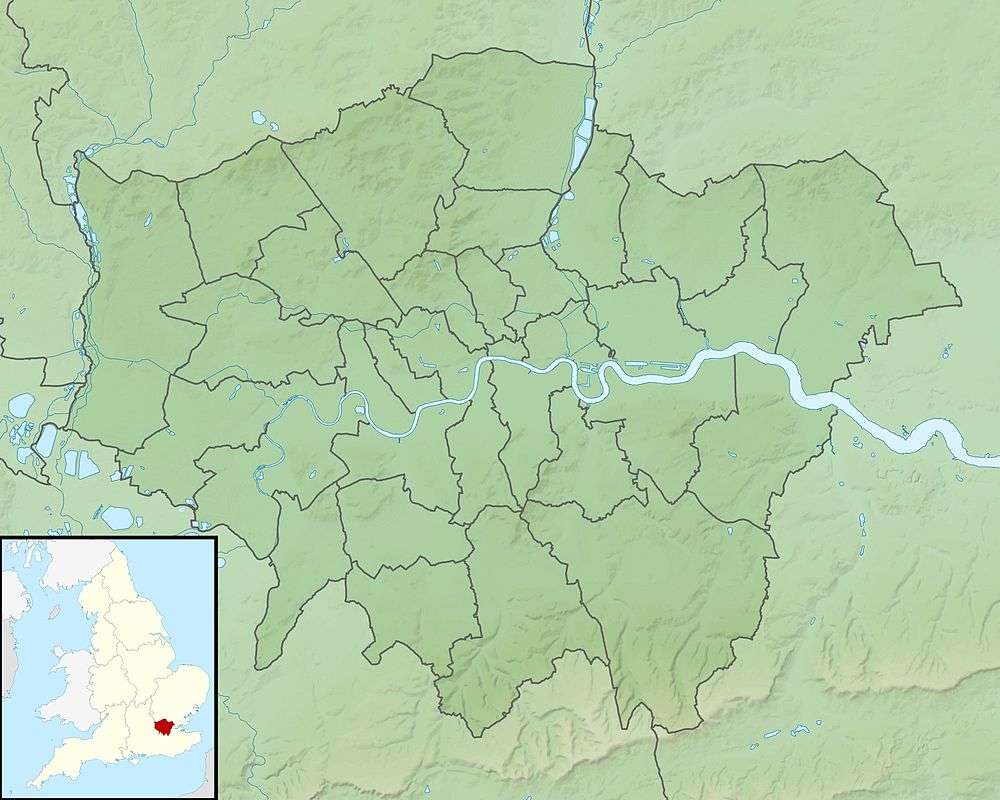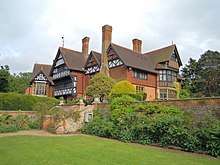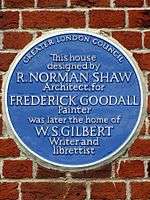Grim's Ditch (Harrow)
Grim's Ditch or Grim's Dyke or Grimes Dike is a great earthwork in the London Borough of Harrow (before 1965 in Middlesex) and lends its name to the gentle escarpment it crowns, marking Hertfordshire's border. It extended east-west about 6 miles (9.7 km) from the edge of Stanmore where an elevated neighbourhood of London, Stanmore Hill, adjoins Bushey Heath to the far north of Pinner Green – Cuckoo Hill. Today the remaining earthworks start mid-way at Harrow Weald Common.[1] It takes its name from the likely Roman Britain-era earthwork which became called one of seven Grim's Ditches, a few of which have two or three rows, in central-to-southern England.
| Grim's Ditch | |
|---|---|
 View towards Harrow from near summit of Grim's Ditch | |
| Highest point | |
| Elevation | 144 m (472 ft) |
| Geography | |
| Parent range | The Grim's Ditches |
| OS grid | TQ138928 |
| Topo map | OS Explorer 173 |
| Climbing | |
| Access | |
Attributes
Paths
A high path, Old Redding, an old high way passes through the centre of the ridge and includes a map-marked viewpoint. Other extensive views through breaks in trees are a few hundred yards further up the "high road".
North Basin high point
The immediate London basin resembles London's present county: three boroughs furthest south reach into the North Downs broad escarpment; those opposing take as their northern edge a broken ridge, low in the north-east, high in the north-west, namely the Grim's Ditch. The two highest ridges in London run along the southern edge of London (namely with Westerham, Kent and Woodmansterne, Surrey). The next highest point is Stanmore Hill along the Grim's Ditch, where London adjoins Bushey, Hertfordshire.
Views
- Many parts of Central London can be seen, including the Shard London Bridge, which exceeds the height of all hills in London and the Home Counties.
- Beyond Harrow on the Hill to the south, Leith Hill can be seen (and its 20-metre-high tower through binoculars).
To the north and west are the Chilterns, and in particular Coombe Hill, Buckinghamshire can be seen.
The highest point of the trail, is close to the county top of the former county of Middlesex, above Grim's Dyke Golf Club on the 'Bushey Heath Walk' footpath. The walk reaches a small wood with a landmark BT microwave aerial, close to the fencing of which is a stone marker placed and worked by the Harrow Heritage Trust that reads:
This ancient earthwork once stretched through Harrow for six miles from Cuckoo Hill, Pinner to Pear Wood, Stanmore, but now only parts remain. Named after Grim (another name for the English King (also the god of death), Woden).'
Hotel and film location
In the woods stands Grim's Dyke, a house designed in 1870 by Norman Shaw for the Victorian painter Frederick Goodall. Later, it was the country home of W. S. Gilbert (of Savoy opera fame) – he suffered a heart attack and drowned while trying to save a swimmer in the lake in the grounds. It is now an hotel and is often used as a film setting. The house and gatehouse are listed buildings.[2]
History
The name and local lore assert fifth to sixth century minimum age. An excavation in 1979 gave a radiocarbon date of 50 AD ± 80 years, which is accurate barring the Anglo-Saxons recycling such older materials.[3] If so it may have been built by the Catuvellauni tribe as a defence against the Romans.[2]
Trivia
The earthwork gave its name to the telephone exchange for Stanmore. The legacy is the first three numbers of many local landlines.[n 1]
References
- Notes
- GRImsdyke translates to 474 as a traditional number which is today preceded by (0)208
- References
- "Harrow Weald Common, Grim's Dyke Open Space, The City Open Space". London Parks & Gardens Trust. 2011.
- "Grim's Dyke Hotel". London Parks & Gardens Trust. 2012.
- Excavations at Grim’s Dyke, Harrow, 1979, London & Middlesex Archaeological Society, 1979


